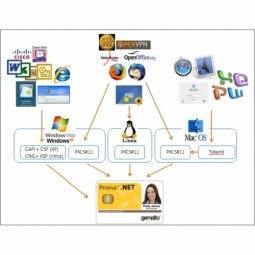ACCELERATE: NATIONAL LABORATORIES North German Supercomputing Alliance (HLRN) Accelerates Scientific Breakthroughs with Peta-Scale Computing and DataDirect Networks High-Performance Storage

Customer Company Size
Large Corporate
Region
- Europe
Country
- Germany
Product
- Cray® XC30
- DDN® SFA®12K-40
- Lustre®
- DDN’s GRIDScaler®
- IBM® GPFS
Tech Stack
- High-Performance Computing
- Distributed Computing
- Data Storage
- Parallel File Systems
- Big Data Analytics
Implementation Scale
- Enterprise-wide Deployment
Impact Metrics
- Productivity Improvements
- Innovation Output
- Cost Savings
Technology Category
- Infrastructure as a Service (IaaS) - Cloud Computing
- Infrastructure as a Service (IaaS) - Cloud Storage Services
Applicable Industries
- Education
- Life Sciences
Applicable Functions
- Discrete Manufacturing
- Product Research & Development
- Quality Assurance
Use Cases
- Predictive Maintenance
- Process Control & Optimization
- Edge Computing & Edge Intelligence
Services
- Cloud Planning, Design & Implementation Services
- Data Science Services
- System Integration
About The Customer
The North German Supercomputing Alliance (HLRN) is a collaboration of scientists across seven North-German states, providing state-of-the-art storage and compute resources to accelerate scientific breakthroughs in various fields. Established in 2001, the alliance currently supports scientists and researchers from Berlin, Brandenburg, Bremen, Hamburg, Mecklenburg-Vorpommern, Niedersachsen and Schleswig-Holstein. The scientists, many of whom come from North German universities and other scientific institutions, have combined resources and funding from their respective states and the German federal government to create a powerful, distributed supercomputer system. The system is operated by a team of experts at Zuse Institute Berlin (ZIB) and at the High Performance Computing Center at Leibniz University in Hannover (RRZN).
The Challenge
The North German Supercomputing Alliance (HLRN) provides scientists across seven North-German states with state-of-the-art storage and compute resources to accelerate scientific breakthroughs in the fields of physics, chemistry, fluid dynamics, engineering and the environment. The scientists, many of whom come from North German universities and other scientific institutions, have combined resources and funding from their respective states and the German federal government to create a powerful, distributed supercomputer system. HLRN’s ability to drive advanced scientific research requires the highest levels of compute power as well as high-bandwidth storage capacity. Given the wide range of data-intensive applications supported by the institute, HLRN sought a Big Data solution that could deliver a significant increase in storage capacity while scaling bandwidth and performance as needed. HLRN also needed to ensure that data could be accessed easily from different geographic locations.
The Solution
HLRN sought an ideal balance between compute power and storage capacity, along with matching bandwidth to facilitate fast and reliable access to all data on disk in a distributed fashion. So, the team included a benchmark to measure I/O performance of compute and storage resources, like bandwidth and metered data performance. In measuring the results of the I/O performance, the team determined that high-performance storage from DataDirect Networks (DDN), in partnership with Cray Inc., would provide the optimal foundation for the alliance’s peta-scale supercomputer environment. HLRN teamed with Cray and DDN to design and deploy a distributed supercomputing system based on Cray XC30 and DDN’s SFA12K-40 with Lustre and DDN’s GRIDScaler file system appliance with IBM General Parallel File System (GPFS) for their “Work” file system that handles computationally intensive workloads. Additionally, HLRN took advantage of its DDN system to support a GPFS for “home” storage, where scientists can store their programs and most important data.
Operational Impact
Quantitative Benefit

Case Study missing?
Start adding your own!
Register with your work email and create a new case study profile for your business.
Related Case Studies.

Case Study
Corporate Identity Solution Adds Convenience to Beckman Coulter
Beckman Coulter wanted to implement a single factor solution for physical and remote logical access to corporate network. Bechman Coulter's users were carrying smart card badges for doors, but also needed a one-time password token to access to our corporate network when they were not in the office. They wanted to simplify the process.

Case Study
Revolutionizing Medical Training in India: GSL Smart Lab and the LAP Mentor
The GSL SMART Lab, a collective effort of the GSL College of Medicine and the GSL College of Nursing and Health Science, was facing a challenge in providing superior training to healthcare professionals. As clinical medicine was becoming more focused on patient safety and quality of care, the need for medical simulation to bridge the educational gap between the classroom and the clinical environment was becoming increasingly apparent. Dr. Sandeep Ganni, the director of the GSL SMART Lab, envisioned a world-class surgical and medical training center where physicians and healthcare professionals could learn skills through simulation training. He was looking for different simulators for different specialties to provide both basic and advanced simulation training. For laparoscopic surgery, he was interested in a high fidelity simulator that could provide basic surgical and suturing skills training for international accreditation as well as specific hands-on training in complex laparoscopic procedures for practicing physicians in India.

Case Study
IoT platform Enables Safety Solutions for U.S. School Districts
Designed to alert drivers when schoolchildren are present, especially in low-visibility conditions, school-zone flasher signals are typically updated manually at each school. The switching is based on the school calendar and manually changed when an unexpected early dismissal occurs, as in the case of a weather-event altering the normal schedule. The process to reprogram the flashers requires a significant effort by school district personnel to implement due to the large number of warning flashers installed across an entire school district.

Case Study
Embracing Business Success in Real Time
· Increase control over growing Big Data to improve business decisions · Manage data for 28,000 biotechnology stockkeeping units in the fields of microbiology, molecular biology, animal cell cultures, plant tissue cultures, and lab ware for laboratory chemicals · Accelerate report generation and analysis with real-time data

Case Study
Implementing Robotic Surgery Training Simulator for Enhanced Surgical Proficiency
Fundacio Puigvert, a leading European medical center specializing in Urology, Nephrology, and Andrology, faced a significant challenge in training its surgical residents. The institution recognized the need for a more standardized and comprehensive training curriculum, particularly in the area of robotic surgery. The challenge was underscored by two independent studies showing that less than 5% of residents in Italian and German residency programs could perform major or complex procedures by the end of their residency. The institution sought to establish a virtual reality simulation lab that would include endourological, laparoscopic, and robotic platforms. However, they needed a simulator that could replicate both the hardware and software of the robotic Da Vinci console used in the operating room, without being connected to the actual physical console. They also required a system that could provide both basic and advanced simulation training, and a metrics system to assess the proficiency of the trainees before they performed surgical procedures in the operating theater.

Case Study
Edinburgh Napier University streamlines long-distance learning with Cisco WebEX
• Geographically dispersed campus made in-person meetings costly and inconvenient.• Distance-learning programs in Malaysia, India, and China required dependable, user-friendly online tools to maximize interaction in collaborative workspaces.• Virtual learning environment required a separate sign-in process, resulting in a significant administrative burden for IT staff and limited adoption of collaboration technology.






